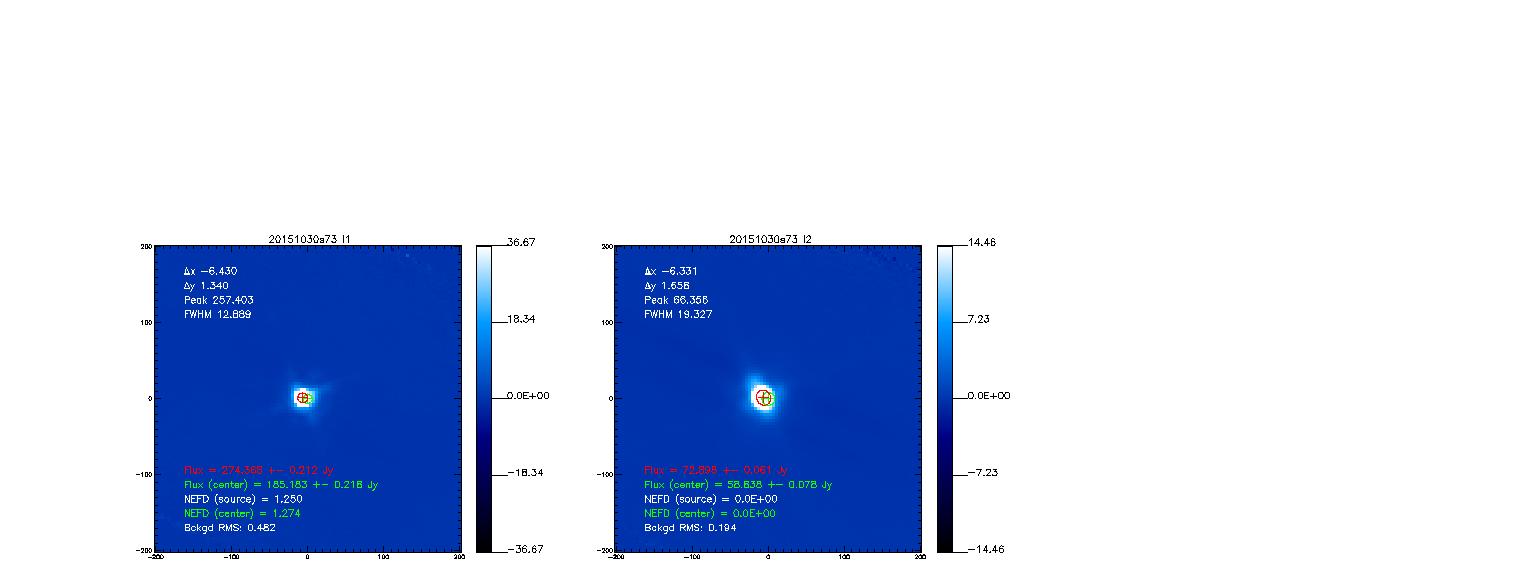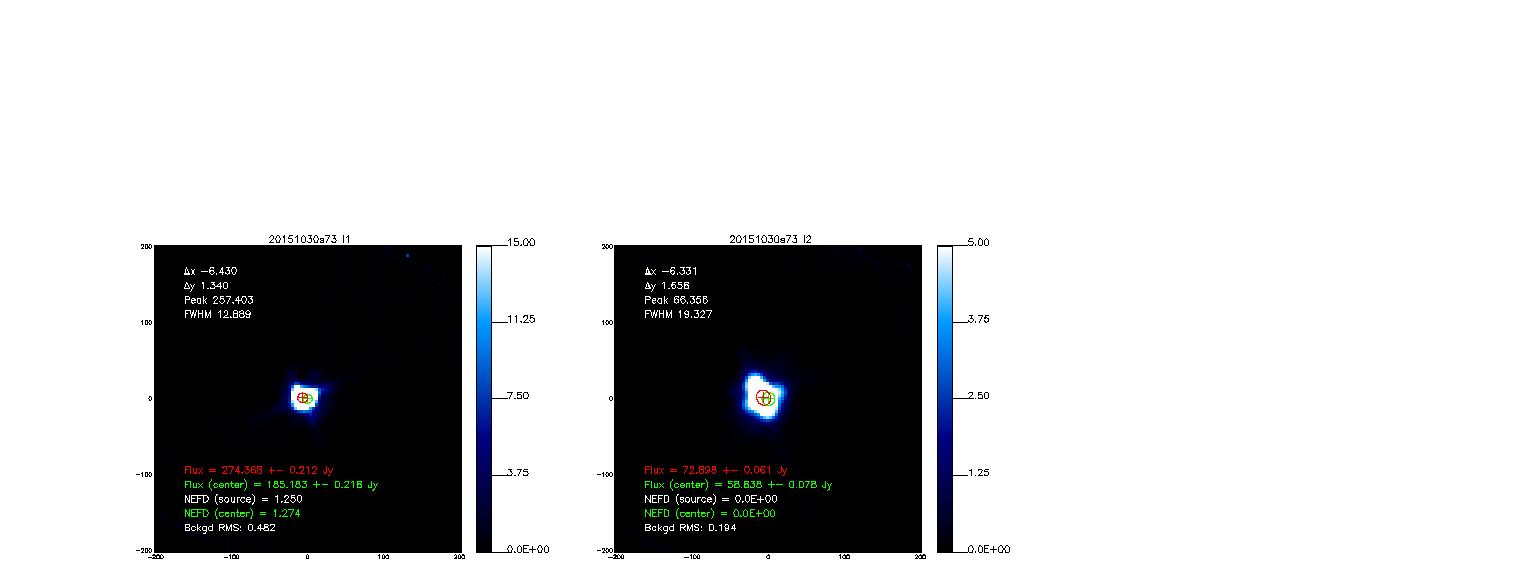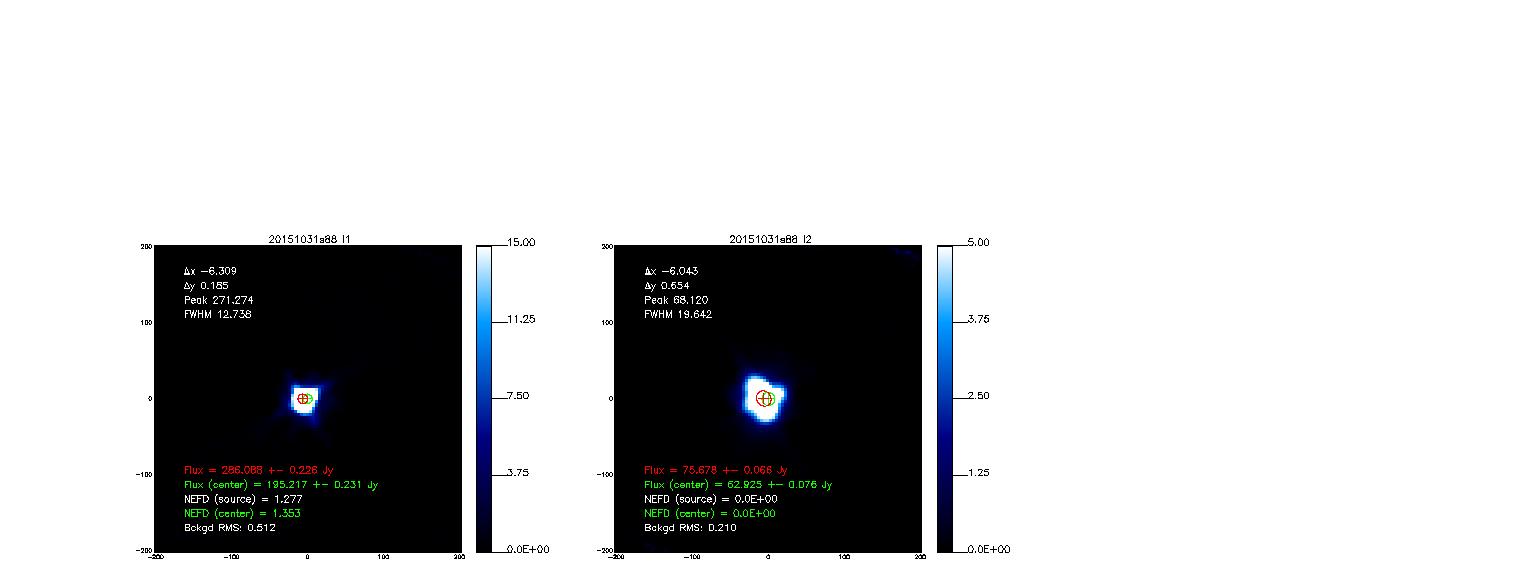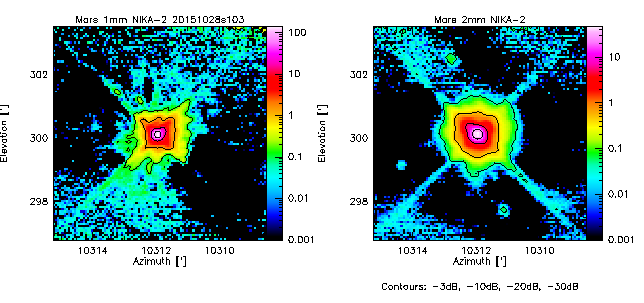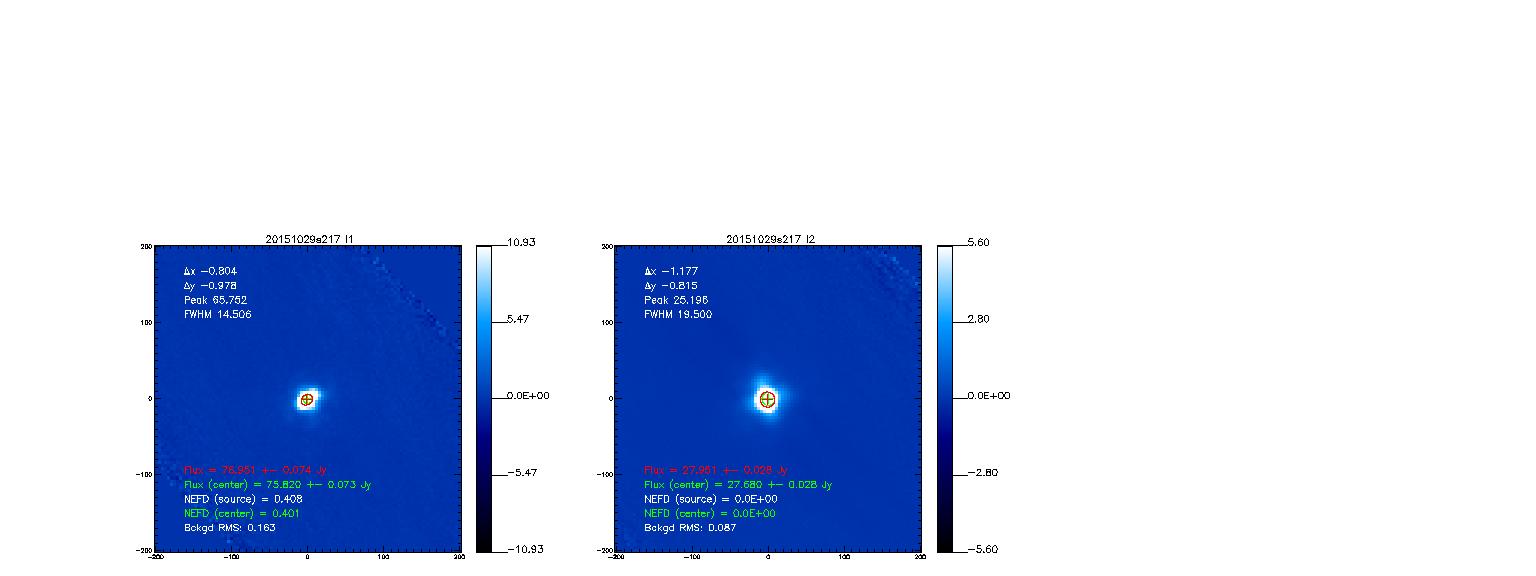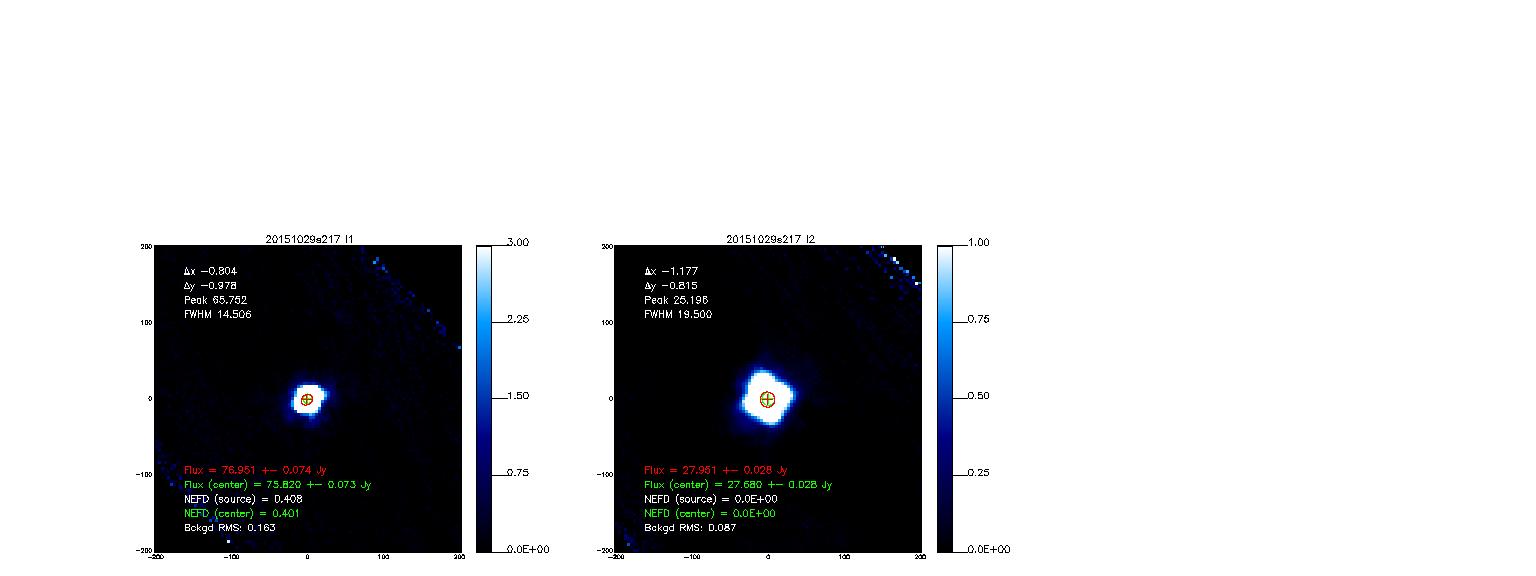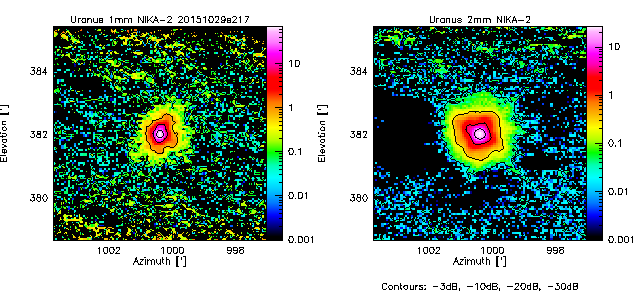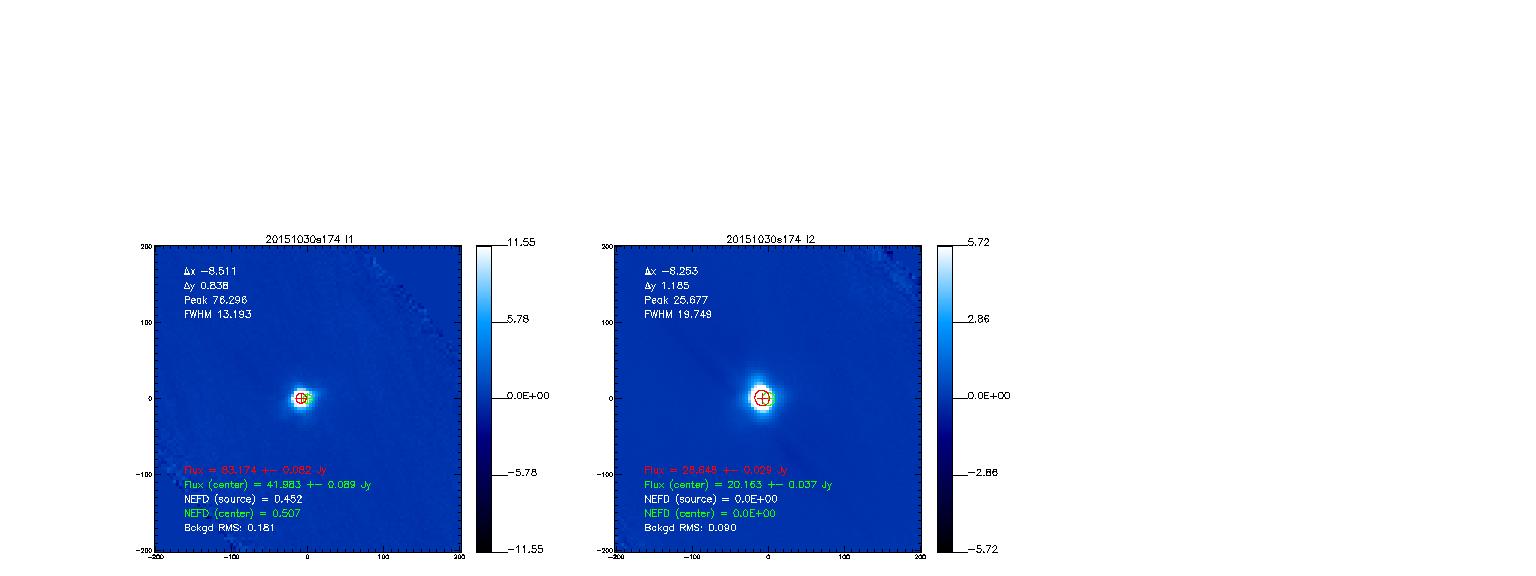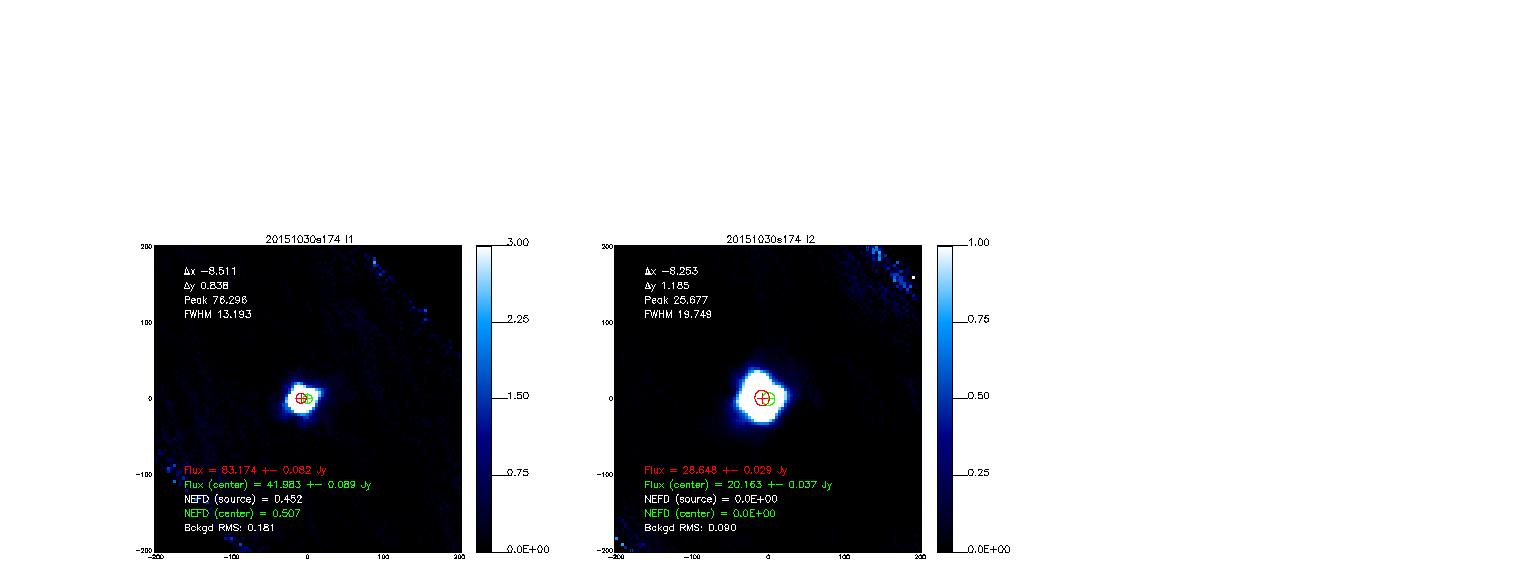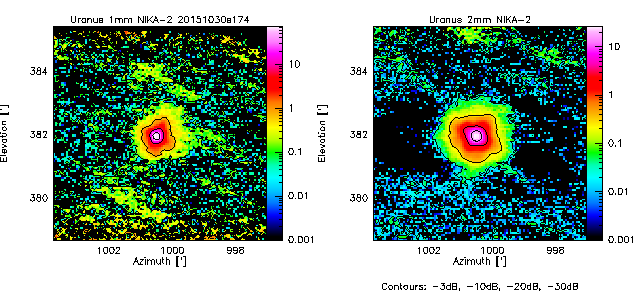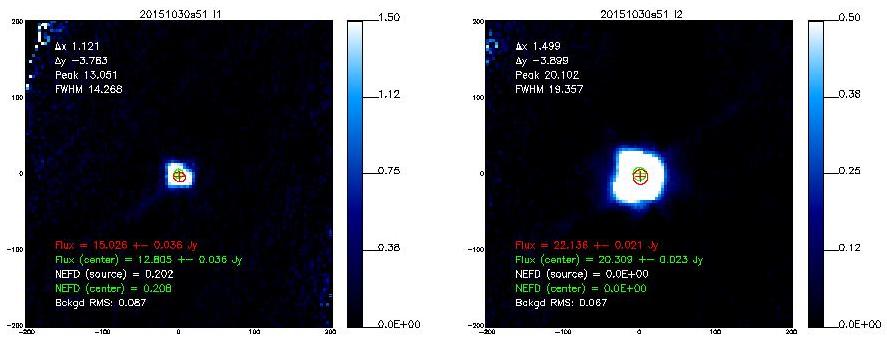|
Size: 2889
Comment:
|
Size: 3017
Comment:
|
| Deletions are marked like this. | Additions are marked like this. |
| Line 71: | Line 71: |
== Theoretical beams from Zemax simulations (SL 2015-11-02) == {{attachment:Beam_NIKA2_log_scale_Zemax_simulation.PNG}} |
Describe OffProcNika2Run1Beam here.
Discussion on beams
Page last updated, FXD, CK, 2015-11-02 Figures to be redone
We measure the beam by using the middle scan of the 3-scans sequence launched with @beammap Here are the best-of on 3 sources.
Preliminary findings
- The main beam (the Gaussian part) seems with a normal width aka 11", 17" (but only in single-pixel analysis). Blind 2D Gaussian fits to the maps result in broader beams of 13", 19.5" (see Table below).
- The quadrupod holding the secondary gives clear diffraction marks as a faint cross at about -30dB, visible in all Mars scans. Uranus and 3C83 are not bright enough to reach -30dB. To go deeper, we need Saturn or Jupiter maps.
- In between, there is a large near-side lobe, especially at 2mm (but also visible at 1mm), that shows up as a rectangular pyramid-like shape at the 10% level, the origin of which is unknown. It seems to scale with wavelength. It was not so apparent in NIKA. Therefore the quality of the dichroic is not at the center of this issue.
For comparison, see the NIKA-1 beam maps in Fig.8 of Catalano+2014 and in Fig.8 of Monfardini+2011.
- The following table shows the FWHMs derived from 2D-Gaussian fits to the observed emission.
Source
Date/Scan
HPBW
HPBW
1mm
2mm
Mars
20151030s73
12.9
19.3
Mars
20151031s88
12.7
19.6
Uranus
20151029s217
14.5
19.5
Uranus
20151030s174
13.2
19.7
3C83
20151030s51
14.3
19.4
Beams on Mars
- 20151030s73
- 20151031s88
- 20151028s103
Beams on Uranus
- 20151029s217
- 20151030s174
Beams on 3C84

